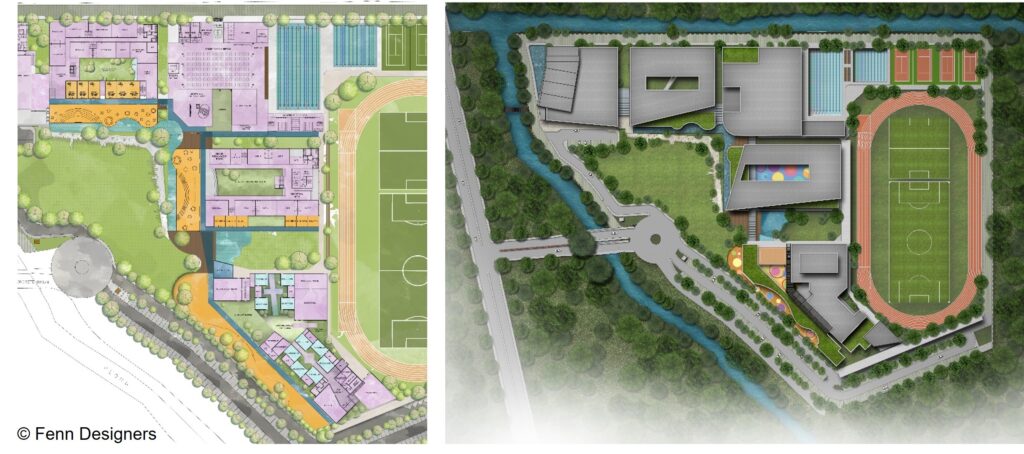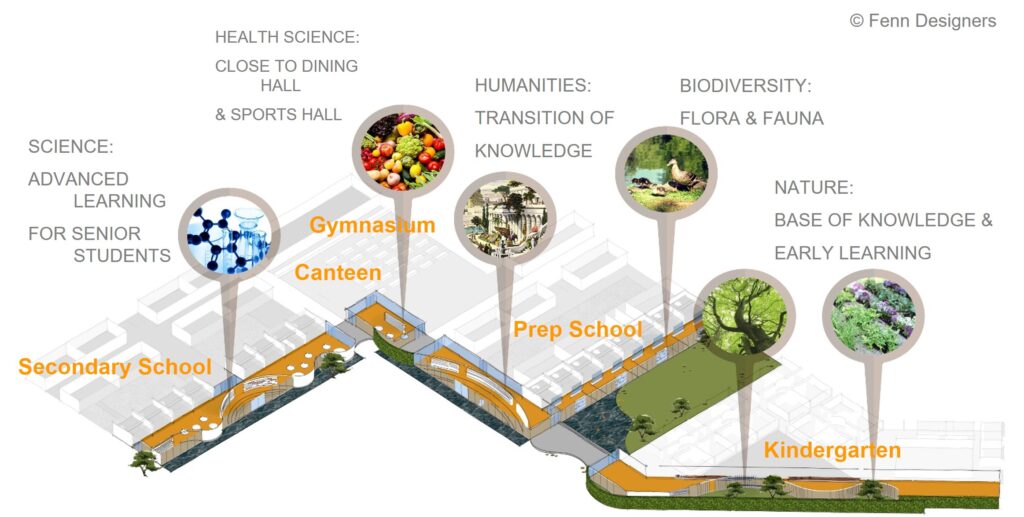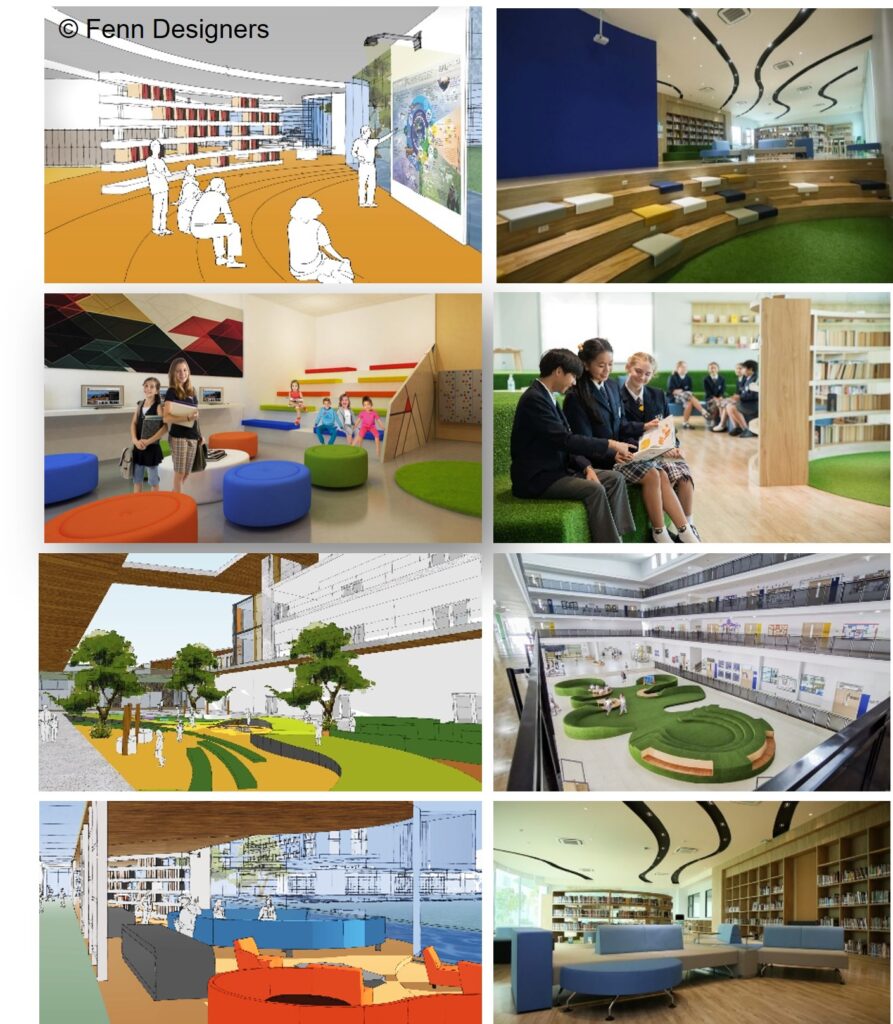A Library for Generation Z
- Dr. Chafia Ferhat
- October 18, 2023
- Wellness
- architecture, Education Design, Educational Health, FENN DESIGNERS, Generation Z, Innovation, Interaction, Library Design, Wellness
- 1 Comment
My teams and I have been designing schools and other education facilitates across Asia for over 3 decades, and although schools have learned to adapt to new technologies and sciences in their curricula, the facilities have still a long way to go.
One facility in schools campuses that has been going through one of the most challenging times; the library.
Apart from the compulsory courses and uses assigned by the school curriculum, these facilities are not used very much and reasons are obvious; new generations of learners prefer a more interactive space that also allow them to multi-task and socialize while studying.
After experiencing this issue in many of the schools we were involved with, we introduced a new concept of a library in one of our recent school projects; Brighton International College in Bangkok.
The school sits in a site of 70,000 sqm in Bangkok and provides British curriculum education from Kindergarten to Grade 12. The school is associated with the original campus in Brighton UK.
We focused the campus planning and design on the basis of providing maximum open spaces and green environments. Using biophilic design has been proven to help children and adults concentrate better. Studies show that tasks performed while under the calming influence of nature are performed better, and with greater accuracy; yielding a higher quality result.
Moreover, being outside in a natural environment can improve memory performance and attention, but that’s a topic for another time.
Going back to our problem “the library building”: one crucial factor in the design of campuses in hot and humid tropical climate is appropriate pedestrian circulation and connectivity of buildings.
As a result, while master planning the campus and dealing with the different constraints and opportunities the site presented, we pioneered a concept of turning the fixed block called a library into a journey.
We combined the main connectivity axis of all teaching buildings, the canteen, and the gymnasium into the Learning Resource Centre.

The Learning Resource Centre or LRC for short, spans across the main campus as a connector axis.
It provides multiple functions;
It is the main students’ circulation from the point of car park, linking them to each and every building in the school. Along the way, nodes are created providing different learning experiences related to the adjoining part of the school;
Daily, on their circulation routes, the students SEE, HEAR, INTERACT, and LEARN from these nodes of the LRC.

The school can use the LRC nodes as gathering spaces to organize debates, do group work, and do presentations.
Given the different character of the all inclusive spaces, they can accommodate learning, working, researching, discussing, socializing, and various group activities.

This innovative, flexible and adaptive way of dealing with changes in our schools and in the way new generations are learning, is an example on how all stakeholders in the education sector can to accommodate the needs of new generations while still ensuring the ethos of education is maintained.
At Fenn, we are dedicated to creating new learning environments that better the wellbeing of students, stimulate their learning, and is in-keeping with modern technologies.
Related Posts
- Geerati Tiasiri
- September 16, 2012
Building Fire & Life Safety inspection, What happens?
The Ministerial Regulations of the Interior Ministry of Thailand are already into effect to def ..
- Dr. Chafia Ferhat
- September 16, 2012
Only rich countries can aspire to develop green buildings
At our latest Lunch & Learn seminar, we were discussing Masdar Project in Abu Dhabi and all ..


homer
This is fantastic! Keep up the good work.